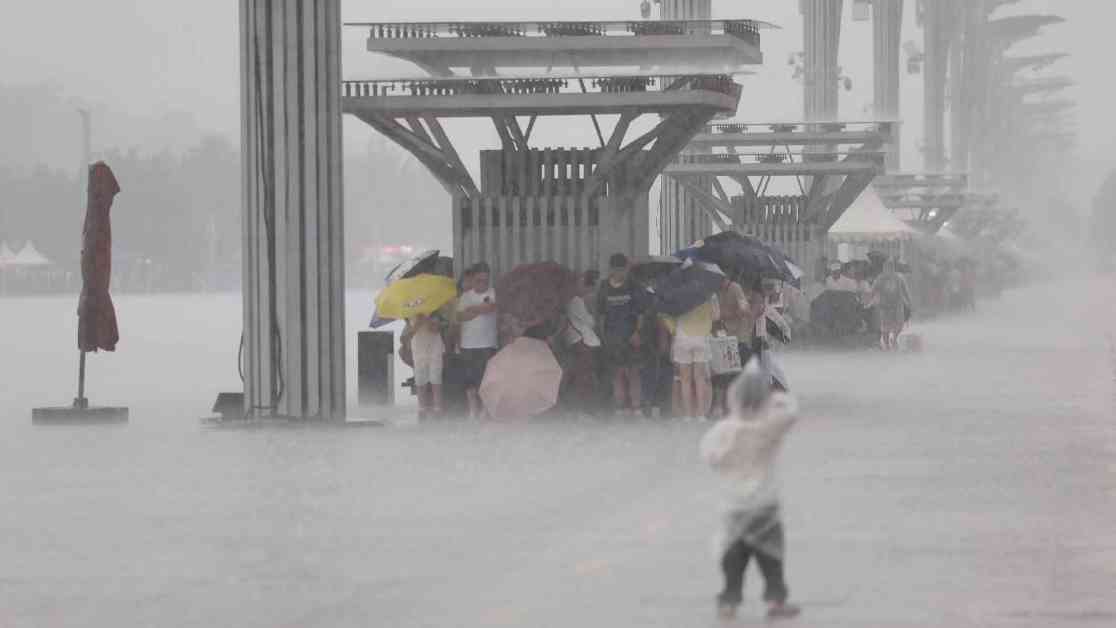China is currently facing a severe flooding situation, prompting the activation of a Level-IV emergency response by the National Flood Control and Drought Relief Headquarters. This response covers most parts of Beijing, the entire area of Tianjin, central southern Hebei, and central northern Shanxi. The decision to activate this emergency response was made following a forecast of heavy to torrential rain in these regions by the country’s meteorological authorities.
Impact of the Flooding
The heavy rainfall has already begun to impact various areas, with tourists in Beijing seeking shelter from the rain on August 17, 2024. This is just the beginning of what could potentially be a dangerous situation for residents and visitors alike. The activation of a Level-IV emergency response indicates the seriousness of the flooding threat and the need for immediate action to mitigate its effects.
In addition to the immediate impact on individuals seeking shelter from the rain, the flooding is likely to have far-reaching consequences for the affected regions. Floodwaters can cause significant damage to infrastructure, homes, and businesses, leading to disruptions in daily life and economic activities. The risk of landslides and mudslides also increases during periods of heavy rainfall, posing a threat to the safety of residents in hilly or mountainous areas.
Emergency Response Measures
The activation of a Level-IV emergency response signifies the highest level of preparedness and coordination among government agencies and emergency responders. This level of response is reserved for situations where the flooding poses a significant risk to life and property, requiring a comprehensive and rapid intervention to protect affected communities.
As part of the emergency response measures, the National Flood Control and Drought Relief Headquarters will likely mobilize resources such as emergency response teams, rescue equipment, and relief supplies to the affected areas. Coordination with local authorities and other relevant agencies will be essential to ensure a swift and effective response to the flooding.
Preventative Measures
While the immediate focus is on responding to the current flooding situation, it is also crucial to implement preventative measures to reduce the impact of future flooding events. This includes investments in flood control infrastructure, such as levees, dams, and drainage systems, to better manage excess water during periods of heavy rainfall.
In addition to physical infrastructure, public awareness and education campaigns can help communities better prepare for and respond to flooding events. This includes providing information on evacuation routes, emergency shelters, and safety tips during floods. By empowering residents with the knowledge and resources to protect themselves, the impact of future flooding events can be minimized.
Conclusion
The Level-IV flood alert in northern China underscores the urgent need for proactive measures to address the growing threat of flooding in the region. By implementing a coordinated emergency response, investing in preventative measures, and raising public awareness, the impact of future flooding events can be mitigated. As the authorities work to manage the current flooding situation, it is essential for residents to stay informed, prepared, and vigilant to ensure their safety and well-being.

















